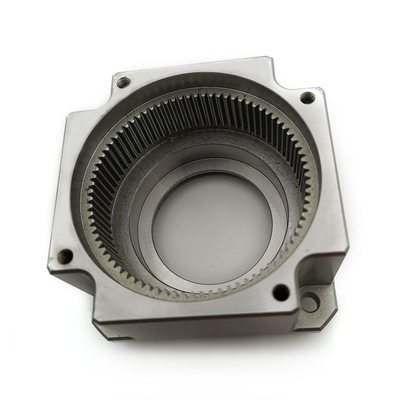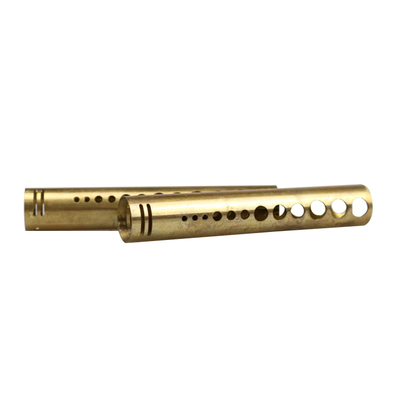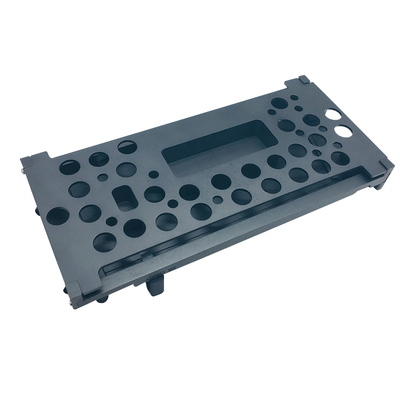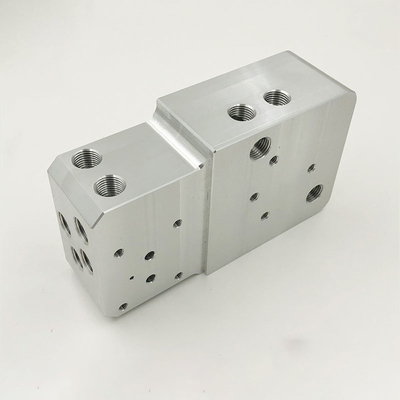Four Ways To Achieve Lightweight 3D Printing
The advantages of lightweight structure are not difficult to understand. Taking a car as an example, lighter weight can bring better handling, and the power output by the engine can produce higher acceleration. Because the vehicle is light, the acceleration performance is better when starting, and the braking distance when braking is shorter. Take airplanes as an example. If the weight becomes lighter, the fuel efficiency and load capacity can be improved.
To achieve lightweight, the macro level can be achieved by using lightweight materials, such as titanium alloys, aluminum alloys, magnesium alloys, ceramics, plastics, glass fiber or carbon fiber composite materials. At the micro level, the parts can be designed more compact and miniaturized by using materials such as high-strength structural steel, which contributes to weight reduction.
And 3D printing brings the feasibility of achieving lightweight through structural design. Specifically, there are four main ways for 3D printing to achieve lightweight through structural design: hollow sandwich/thin-wall reinforced structure, hollow lattice structure, integrated structure realization, and special-shaped topology optimization structure.
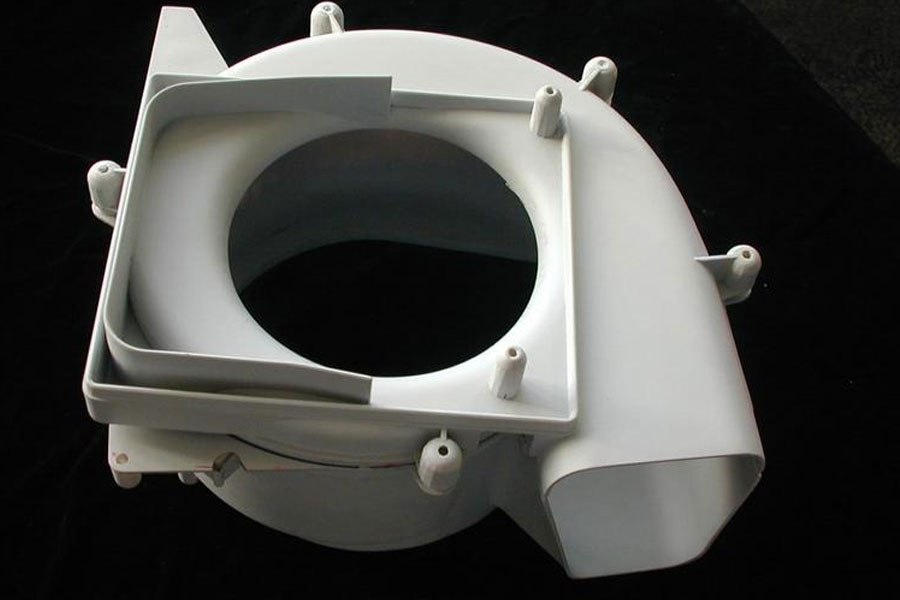
Approach 1: Hollow sandwich, thin-walled reinforced structure
Hollow sandwich and thin-walled reinforced structures are usually composed of thinner panels and thicker cores. Under bending load, the surface layer material mainly bears the tensile stress and the compressive stress, and the core material mainly bears the shear stress and part of the compressive stress. The sandwich structure has the advantages of light weight, high bending rigidity and strength, strong anti-instability ability, fatigue resistance, sound absorption and heat insulation.
In aviation, wind turbine blades, sports equipment, shipbuilding, train locomotives and other fields, a large number of sandwich structures are used to reduce weight.
If aluminum and titanium alloys are used as the skin and core material, this sandwich structure is called a metal sandwich structure. In the 3D printing process, PTJ Hardware uses a sandwich structure to achieve rapid and lightweight components. The designed sandwich structure is directly The tensile and compressive loads acting on the outer skin have a good dispersion effect, and thin-walled structures (such as wall thicknesses below 1mm) can also contribute to weight reduction; sandwich and similar structures can be used as radiators and applied to parts. Greatly increase the heat exchange area of the parts and improve the heat dissipation efficiency.
Approach 2: Hollow lattice structure
The hollow lattice structure can achieve the perfect balance of engineering strength, toughness, durability, statics, dynamic performance and manufacturing cost. Design and manufacture through a large number of periodic duplication of single cells, and adjust the mechanical properties of the structure such as strength and toughness by adjusting the relative density of the lattice, the shape, size, material and loading rate of the cell.
The three-dimensional hollow structure has a high degree of spatial symmetry, which can evenly decompose the external load, and ensure the load-bearing capacity while achieving weight reduction. In addition to engineering requirements, the hollow lattice structure has space pores (the pore size is adjustable), which can facilitate the fusion of the human body (tissue) and the implant in the application of implants.
Hollow lattice unit design has high flexibility. According to the environment of use, lattice units with different shapes, sizes and porosities can be designed. Dongguan PTJ Hardware has made continuous attempts in this regard: In areas with high component strength requirements, adjust the density of the lattice unit to a larger value, and choose a hollow lattice unit with high structural strength; in areas with high component weight reduction requirements, Add a hollow lattice structure with a large lightweight range. The hollow structure can not only be arranged regularly, but also randomly distributed to form irregular pores. In addition, the hollow structure can also present a gradient transition arrangement of variable density and thickness to meet the overall gradient strength requirements of the component.
We found that it is interesting that a lot of our focus is on how the lattice structure achieves the strength and flexibility we need. Some very niche studies also include how to obtain the required "vulnerabilities". Before, the British Lightweight Project Alliance was studying how to crush the lattice structure. The application scenario is that when the return space capsule enters the earth's air layer, changes in pressure and speed pose great challenges to the mechanical structure of the capsule. The lattice structure of additive machining Ti-6AI-4V obtains an ultra-light density of 0.4k/cm3. Such a structure needs to be designed to be "crushed" under certain pressure. 3D printing has opened a new field for the realization of the mechanical performance of the hollow lattice unit.
Path 3: Realization of integrated structure
3D printing can integrate parts that were originally combined by multiple components. This not only realizes the integrated structure of the parts, but also avoids the connection structure (flanges, welds, etc.) that exist when the original multiple parts are combined. Help designers break through the constraints to achieve functional optimization design.
The realization of the integrated structure not only brings the advantages of light weight, but also reduces the need for assembly and opens up feasible space for enterprises to improve production efficiency. A typical case in this regard is GE's continuous optimization, testing and re-optimization of its fuel injector design through more than 10 years of exploration, reducing the number of fuel injector parts from more than 20 to one. The integration of the structure through 3D printing not only improves the problem of easy overheating and carbon deposition of the fuel injector, but also increases the service life of the fuel injector by 5 times, and will improve the performance of the LEAP engine.
Path 4: Special-shaped topology optimization structure
Topology optimization is an important means to shorten the design process of additive manufacturing. Topology optimization is used to determine and remove materials that do not affect the rigidity of parts. The topology method determines the best material distribution in a certain design area: including boundary conditions, pretension, and loads.
Topology optimization redistributes materials for the original parts, and can often achieve functional optimization based on weight reduction requirements. The topologically optimized special-shaped structure is simulated and analyzed to complete the final modeling. These designs often cannot be processed by traditional processing methods, but can be achieved through 3D printing. Usually the 3D printed product and the parts manufactured by the traditional process still need to be assembled together, so the design of the combination of the two parts needs to be considered at the same time.
The four 3D printing structures introduced above are one of the directions to achieve mechanical lightweight. Realizing mechanical lightweight is a systematic project, from the design optimization and manufacturing of each key component to the development and application of lightweight materials. Indispensable on the road of lightweight exploration.
Link to this article:Four Ways To Achieve Lightweight 3D Printing
Reprint Statement: If there are no special instructions, all articles on this site are original. Please indicate the source for reprinting:https://www.cncmachiningptj.com/,thanks!
 Sheet metal, beryllium, carbon steel, magnesium, 3D printing, precision CNC machining services for heavy equipment, construction, agriculture and hydraulic industries. Suitable for plastics and rare alloys machining. It can turn parts up to 15.7 inches in diameter. Processes include swiss machining,broaching, turning, milling, boring and threading. It also provides metal polishing, painting, surface grinding and shaft straightening services. The production range is up to 50,000 pieces. Suitable for screw, coupling, bearing, pump, gearbox housing, drum dryer and rotary feed valve applications.PTJ will strategize with you to provide the most cost-effective services to help you reach your target,Welcome to Contact us ( [email protected] ) directly for your new project.
Sheet metal, beryllium, carbon steel, magnesium, 3D printing, precision CNC machining services for heavy equipment, construction, agriculture and hydraulic industries. Suitable for plastics and rare alloys machining. It can turn parts up to 15.7 inches in diameter. Processes include swiss machining,broaching, turning, milling, boring and threading. It also provides metal polishing, painting, surface grinding and shaft straightening services. The production range is up to 50,000 pieces. Suitable for screw, coupling, bearing, pump, gearbox housing, drum dryer and rotary feed valve applications.PTJ will strategize with you to provide the most cost-effective services to help you reach your target,Welcome to Contact us ( [email protected] ) directly for your new project.

- 5 Axis Machining
- Cnc Milling
- Cnc Turning
- Machining Industries
- Machining Process
- Surface Treatment
- Metal Machining
- Plastic Machining
- Powder Metallurgy Mold
- Die Casting
- Parts Gallery
- Auto Metal Parts
- Machinery Parts
- LED Heatsink
- Building Parts
- Mobile Parts
- Medical Parts
- Electronic Parts
- Tailored Machining
- Bicycle Parts
- Aluminum Machining
- Titanium Machining
- Stainless Steel Machining
- Copper Machining
- Brass Machining
- Super Alloy Machining
- Peek Machining
- UHMW Machining
- Unilate Machining
- PA6 Machining
- PPS Machining
- Teflon Machining
- Inconel Machining
- Tool Steel Machining
- More Material

